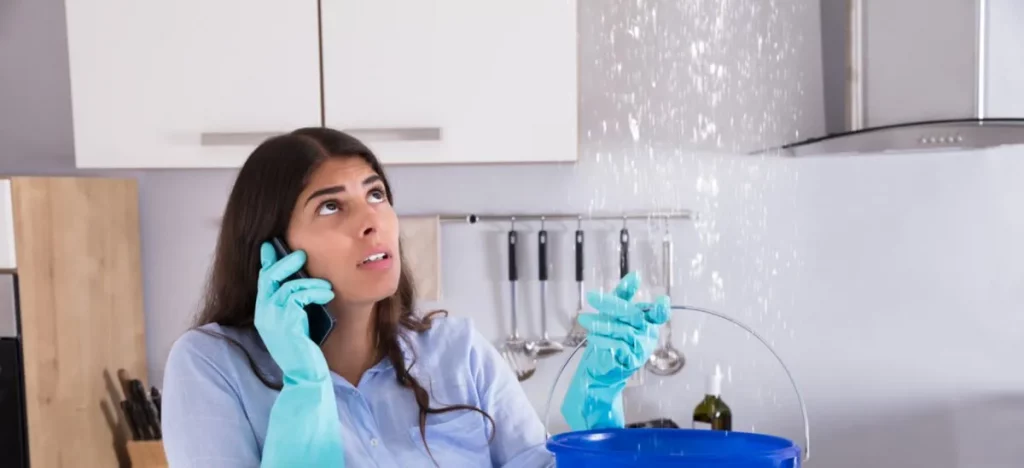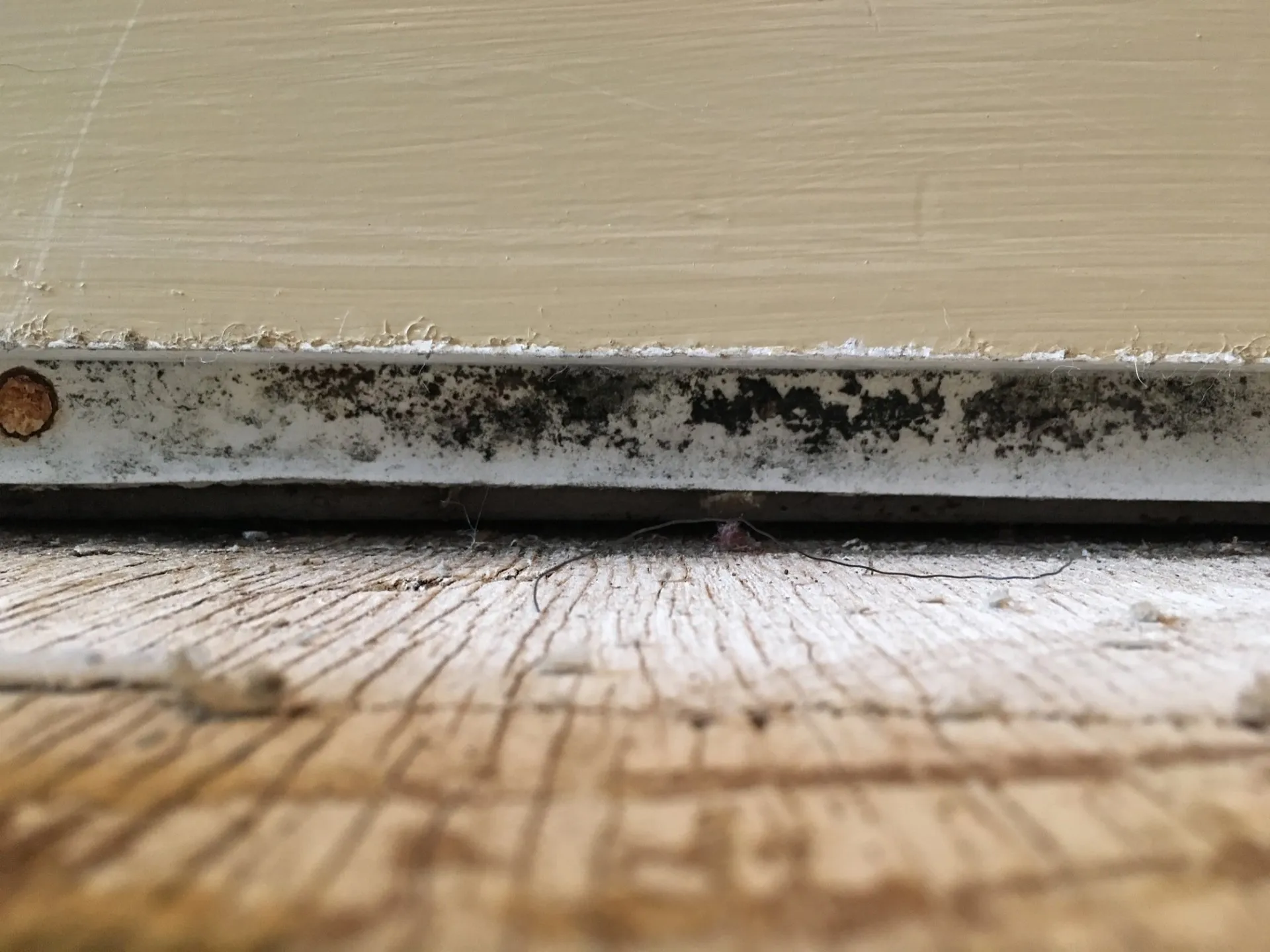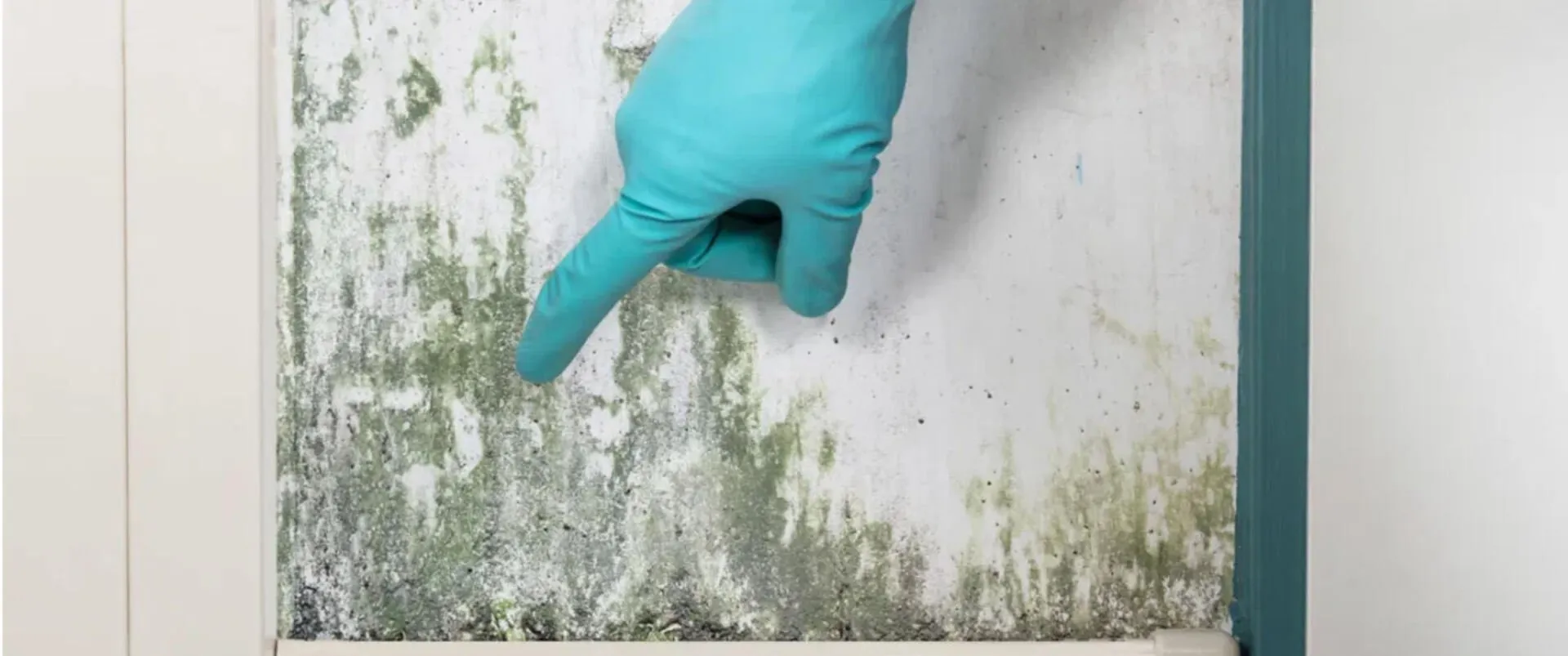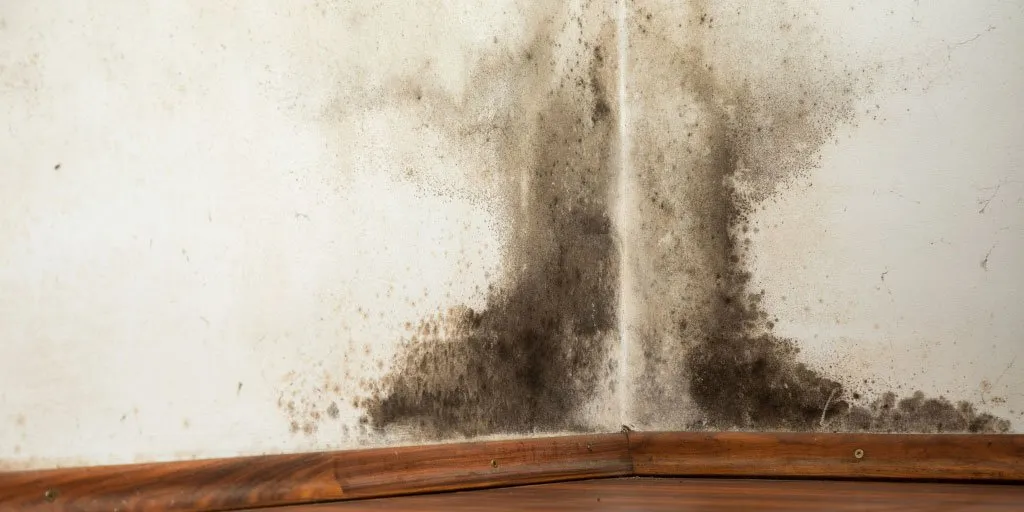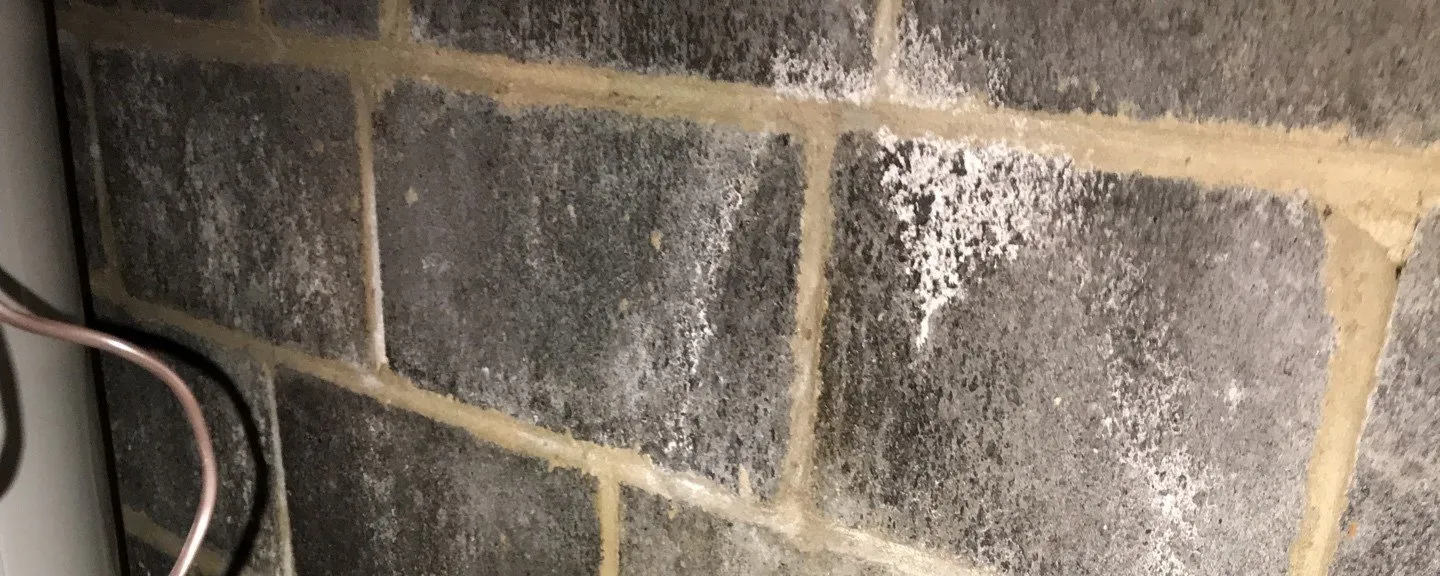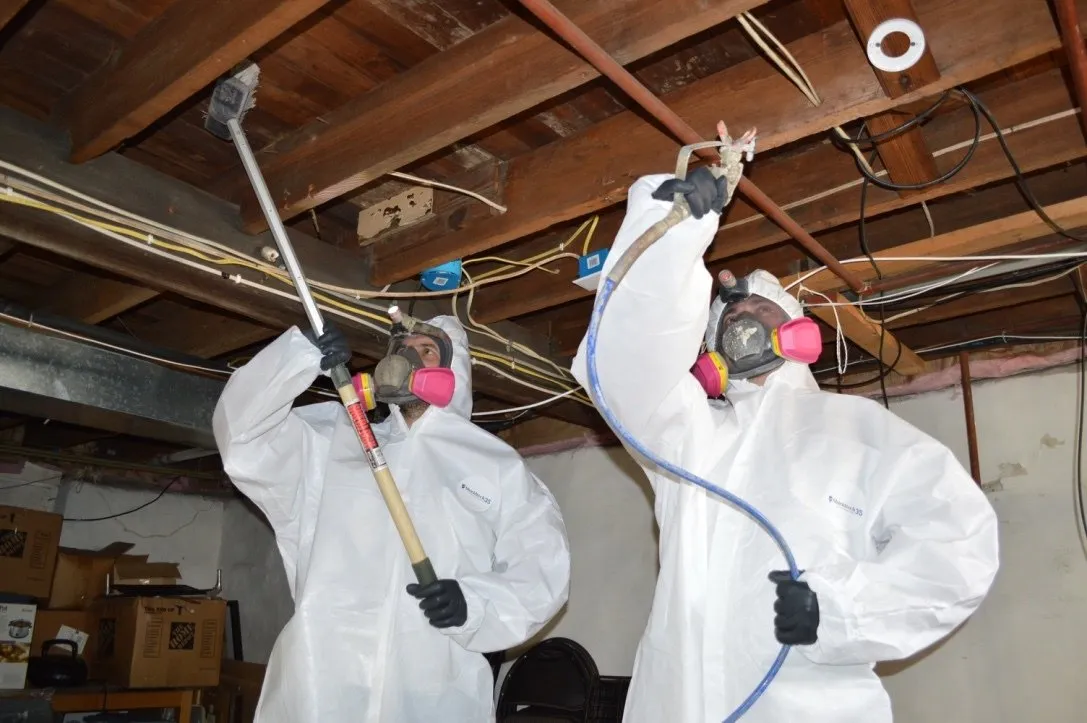
A musty smell or discolored patches on the walls or ceilings are some of the first indications of a mold problem in your home. Indoor mold growth can lead to serious health issues and damage if left unaddressed. It is very common for mold to thrive in damp, humid environments like basements and bathrooms, as well as in houses that have poor ventilation. Some of the side effects of mold in your home can range from allergic reactions to severe respiratory problems. If there is mold in your home, it continually circulates through the air you breathe, increasing the likelihood of respiratory ailments, allergies, and other adverse effects over time. This is especially concerning for infants, children, older people, and those with existing respiratory conditions or compromised immune systems. Therefore, mold should be addressed as soon as possible for your well-being.
What is Mold?
Molds are fungi that spread via tiny, lightweight spores, allowing them to grow almost anywhere with access to moisture and oxygen. Mold spores reproduce when they land on a damp, organic food source like wood, paper, carpet, insulation, or food. Some mold varieties have spores that quickly become airborne with any disturbance, while others have stickier spores that cling to surfaces. Mold spores can remain viable for years, perpetuating indoor air quality issues long after the initial growth. While mold is easily ignored, it should be taken seriously as it can trigger and worsen health issues. Increased asthma symptoms have been linked to indoor mold exposure, especially in poorly ventilated homes. Other potential effects of breathing in mold, depending on the type, range from mild irritations like skin rashes, red eyes, and nasal congestion to severe allergic reactions. If a mold infestation persists for a longer period, it poses greater health risks.
What are the Physical Signs of Mold in your House?
There are usually visible clues that mold has taken root in your home. Being aware of these signs of mold can help you catch a mold issue early before it becomes a bigger problem.
-
Visible Mold Growth
One of the most apparent signs of mold in the house is visible mold growth. This can take many forms: fuzzy patches, powdery splotches, velvety smears, or slimy streaks. While often green or black, mold can also appear white, gray, purple, pink, and orange as well. If you spot suspicious discoloration spreading across any surfaces, it’s likely mold and needs professional remediation.
-
Leaks
Leaks, even small ones, can quickly lead to major mold problems. When appliances or plumbing fixtures leak, the water can soak into cabinets, floors, and walls, causing moisture buildup that allows mold to thrive. What seems like a minor drip can create the damp conditions that mold needs to spread rapidly.
-
Musty Smell
Your nose may alert you to mold’s presence before your eyes do. If your home inexplicably has a persistent musty, earthy odor reminiscent of wet clothes or rotting wood, it’s likely due to hidden mold. This distinctive smell comes from gases (MVCOCs) released by the mold.
-
Warped or Discolored Surfaces
Warping, cracking, bubbling, or peeling surfaces like paint, wallpaper, flooring, or ceilings can indicate moisture damage that may be allowing mold to grow. Bowed wood or discolored drywall signals potential mold growth lurking out of sight within wall cavities or under floors.
-
Allergic Reactions
If you or your family members experience consistent allergic symptoms like sneezing, coughing, rashes, or eye, nose, or throat irritation with no apparent cause, it could be the side effects of mold in the house. These issues will worsen in damp areas like basements, bathrooms, or rooms with poor ventilation. If you notice allergy symptoms that have no explanation, consult your doctor and have your home inspected by a professional mold remediation expert to locate and remove mold spores.
What are the Health Effects of Mold Exposure?
There are several health effects of mold exposure. Some of the most common include the following:
-
Respiratory Issues
One of the biggest dangers of mold is its impact on respiratory health. For those with asthma, mold exposure increases the risk of more severe asthma attacks with symptoms like shortness of breath, coughing, wheezing, and chest tightness. Studies show that constant exposure to mold may even contribute to the development of asthma.
-
Allergic Reactions & Skin Irritations
Allergic reactions and skin irritation are the most common health effects of mold exposure. Symptoms of mold exposure include a runny nose, sneezing, coughing, wheezing, eye irritation, sore throat, congestion, rashes, and headaches. Anyone allergic to mold could also experience constant allergy symptoms when they are exposed to mold. Anyone who has both mold allergies and asthma has a higher risk of asthma attacks when exposed to mold.
-
Hypersensitivity Pneumonitis (HP)
This lung inflammation occurs when your immune system reacts to inhaled triggers, like mold. Symptoms mimic pneumonia and include shortness of breath, cough, muscle aches, chills, fever, night sweats, and fatigue. HP is triggered by exposures to substances, including mold, and can cause permanent damage.
-
Chronic Obstructive Pulmonary Disorder (COPD)
Mold exposure can trigger COPD flares, which include symptoms such as wheezing, chest tightness, excess mucus production, and increased breathing difficulty. COPD refers to chronic lung diseases such as bronchitis and emphysema that make breathing increasingly difficult. Outdoor mold sources like gardening and compost sites also increase COPD risks.
How to Prevent Mold at Home?
After understanding the various health risks associated with mold exposure, it’s clear that preventing mold growth in your home should be a top priority. Here are some steps to avoid mold growth in your home.
- Fix water leaks immediately and thoroughly dry wet areas using fans and dehumidifiers.
- Maintain indoor humidity levels that are below 50% with air conditioners and dehumidifiers
- Ensure proper ventilation and use exhaust fans when cooking or showering
- Don’t place carpets in moisture-prone rooms like bathrooms or basements
- Replace any windows that leak or cause condensation buildup
- Use mold biocides,, keep surfaces dry, and allow wet items to air dry fully
- Ensure proper drainage of water away from the home’s foundation
- Consider using mold-resistant paint
- Routinely inspect your home for any new mold growth or sources of moisture
- Have your home professionally inspected if you suspect hidden mold issues
Steps to Get Rid of Mold in House
If mold is detected in your home, it’s essential to take prompt action to remove it. Below are the top 5 steps for effective mold remediation.
- Control moisture: Solving moisture problems is crucial to eliminating existing mold and preventing future growth. Repair any leaks that are allowing moisture to infiltrate your home.
- Increase ventilation: Using fans and opening windows can help dry out damp indoor areas where mold is actively growing.
- Remove and replace: Porous materials like drywall, carpeting, and ceiling tiles may need to be discarded and replaced if they’ve absorbed excessive moisture and become moldy.
- Prevent regrowth: After cleaning the mold, identify and fix the original moisture sources to keep mold from returning. You may need dehumidifiers or ventilation system upgrades to prevent mold growth effectively.
- Call for professionals: For widespread or recurring mold issues, it is important to hire experienced mold remediation specialists to contain and remove all mold growth properly and prevent future growth.
Conclusion
While small amounts of mold may seem harmless, allowing mold to persist and spread in your home can lead to severe consequences. Keeping humidity levels under control, promptly fixing any moisture sources, and quickly remediating mold growth are all crucial to maintaining a safe, healthy environment. If you have concerns about excess mold in your home, workplace, or other space, don’t hesitate to consult the experts at Lamunyon Mold. Our team of licensed professionals can conduct a thorough mold inspection, test for mold, and remediate the problem. Call us today to schedule a mold assessment and maintain a healthy environment in your home.

